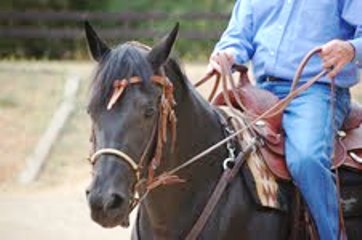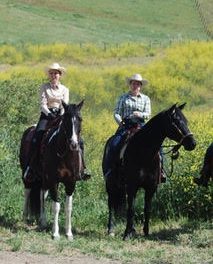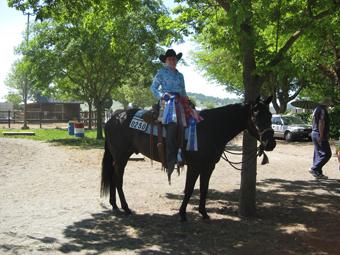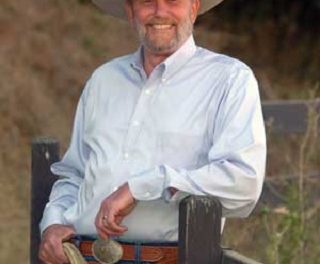
Inside Rein
I am often asked if it is correct to ride with a loose rein or if contact should be maintained. The different riding disciplines have different ways of using rein aids, however, in discussing the rein aids, it is best to start with the basics. It is important to understand the use of the reins and what rein movement means. Reins are aids used to direct a horse. The left and right reins tell the horse where we want to go. This includes directing the horse to go right, left, stop, back up, move the hind quarters or move the shoulders. The use of the seat and leg aids goes along with proper use of the rein aids. And, it is important to remember that we always use the body aids first and the rein aids last. Also, the horse must have enough training to understand body aids plus rein aids. In this discussion we are going to assume that the horse does understand the proper cues.
The inside rein is called the direct rein. This rein determines the direction we want the horse to travel and the amount of the bend we want in the neck of the horse. The outside rein reinforces the request of the inside rein. The outside or indirect rein, is in use at the same time. If I want my horse to go to the right, I open the inside rein. The rein is open to show the horse the direction I want to go. If the horse is green, I may have a large open rein. This would be eight to 12 inches out away from me. As a horse gets more finished, the movement is less obvious and less directional. It may be just a touch on the inside rein to tip the nose.
The outside rein dictates how much bend is in the horse’s neck. We all have a tendency to pull too much on directional control. When a horse is directed to go right but wants to go more straight and not follow the inside rein and his nose, most riders will pull more on the inside rein. Then, if the horse is somewhat supple, that action will cause a bigger bend in the horse’s body. While it is a natural human response to pull on that inside rein, when we are trying to go right and we pull more on the inside rein, the left shoulder will bulge out. The horse will start to go at
a diagonal to the left or even lateral to the left. Hence, pulling more to the right to go right is not the answer. The correct thing to do is to engage the outside rein, which is also called the indirect or supportive rein. Use of the indirect rein will regulate or manage the amount of bend in the horse.

Outside Rein
If I want to turn right, I open the right rein and use the outside rein to support the right rein cue and to prevent the shoulder from going left. The outside rein should not cross over the withers. I can also slightly bring that rein back toward my hip to block forward movement and create a sharper turn. If I want a sweeping turn, I will use less outside rein which will maintain the shoulder support and the amount of bend. For example, if I am riding a 20-meter circle to the right, I want to use just enough inside rein to manage a small bend. Doing this, at most I can see about 1/4 of the horse’s eye. My right leg is at the cinch.
Use of the leg and seat aids goes right along with the rein aids. The reins show the horse where to go but our legs tell the horse to do it. Our seat aids are used before anything is done with the rein aids. I tell my students to look with their belly buttons on a turn. I used to tell people to look where they were going but I found that they would only rotate their necks and the rest of the body would continue going straight. When we rotate our belly button to the right, we are actually rotating our upper body and lower torso. We are opening our right thigh and seat bone and closing the left thigh and seat bone. By doing that, we are opening the door and closing the left door with our body. I like to tell my students that in the next class they are going to have to ride without a bridle. What this means is that I am trying to get them to execute every movement using primarily body aids. Another way I like to say it is using body English. We put our body in a position to direct and communicate with the horse and work with the movement instead of
against it.
Keep in mind that this is all based on the horse understanding the cues. To review, the left rein is the indirect rein. It executes or shows and supports what the inside rein is asking for. The left leg tells the horse where to go. Once the horse has executed the movement, the aids must immediately be released. Every horse in every discipline should know these aids. It doesn’t matter if you are a dressage rider, hunter/jumper, a western, trail, or endurance rider. What matters is that the aids are executed properly and the pressure released quickly. That is good
communication and riding effectively. Sometimes our use of the aids may be confusing. We talked about wanting to turn right but pulling too much on the inside rein and creating a big bend in the horse’s neck which results in the horse going straight or to the left. That is not good communication. It is not riding effectively.

Over Bending
Now, lets go back to the length of the rein. If I am riding a green horse, no matter what discipline, I will ride with a relatively short rein. I will maintain light contact, just enough that if the horse reacts to a stimulant that I need to control, I can use my rein aids instantly to control the situation. If I am riding relaxed with a long rein and the horse jumps or bolts, I must gather up the reins quickly or I could be in trouble. As the horse is more well trained and I can trust the horse more, I can relax the rein aids. In other words, maintain less contact. One way I evaluate a
horse that comes in for training is to determine if the horse will perform the riding exercises at a walk, trot and canter if I ride with a loose rein.
In the dressage discipline, a horse is ridden with contact. There is nothing wrong with that and we can teach our horse to give. We can teach our hands to be light and not always pulling on the mouth. We can maintain constant communication and when the horse softens we soften our aids. When the horse braces or leans on our hands, we block until the horse gives and as we ride through with our seat we are teaching the horse to come under himself.
In western, we typically ride with a loose rein. We don’t ride with such a loose rein that we lose our connection with the horse. I want a loose rein but I want to be able to execute a needed cue quickly so I don’t have much drape in the rein. The drape may be a couple of inches but it is different with each horse and you have to regulate what works for you and your horse. Use of the reins in this way is done with a snaffle, hackamore or a bridle. No matter what you have on the horse’s face, the horse must understand the rein, leg and seat aids. Remember that the rein aids
are the last to be used.





